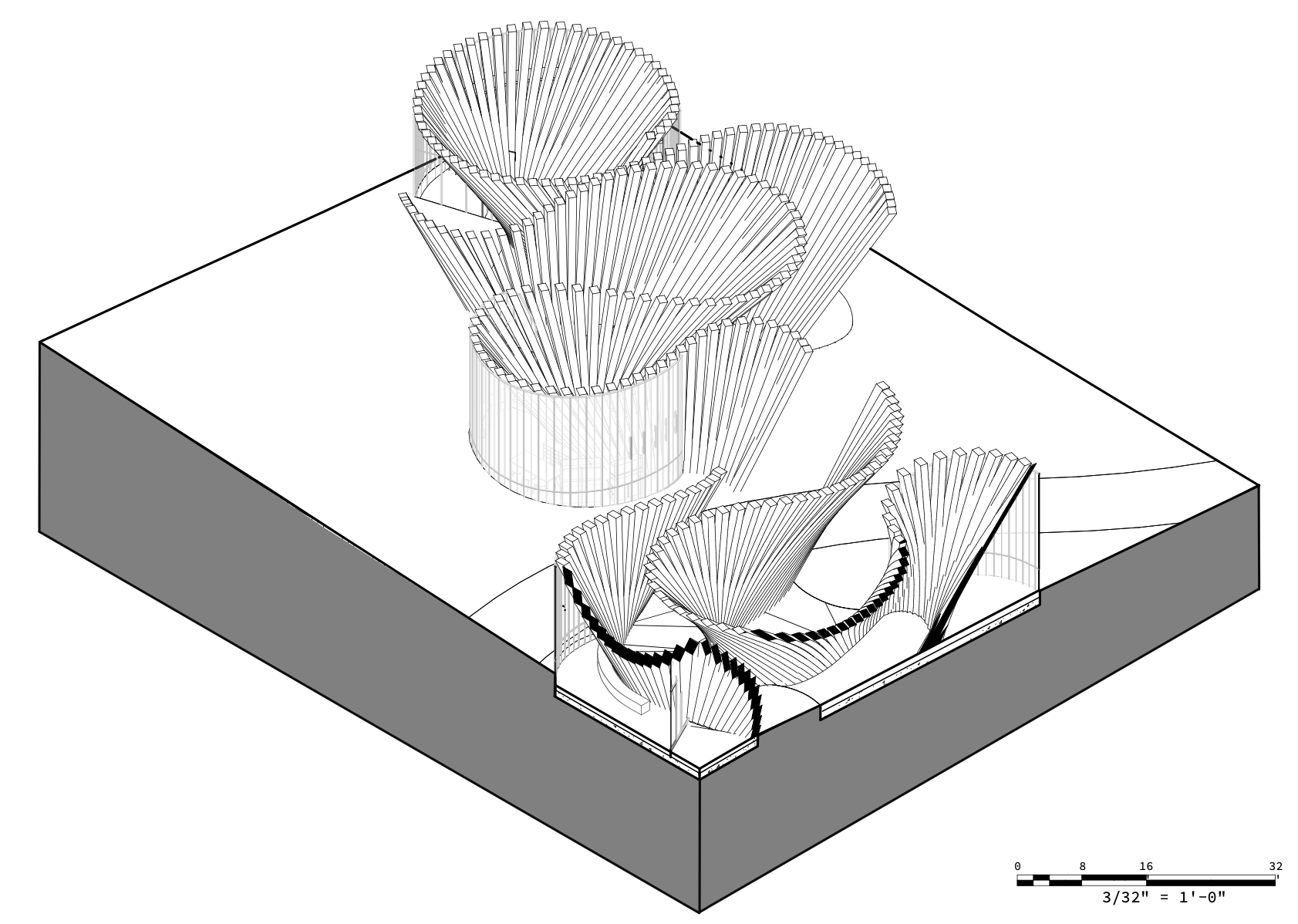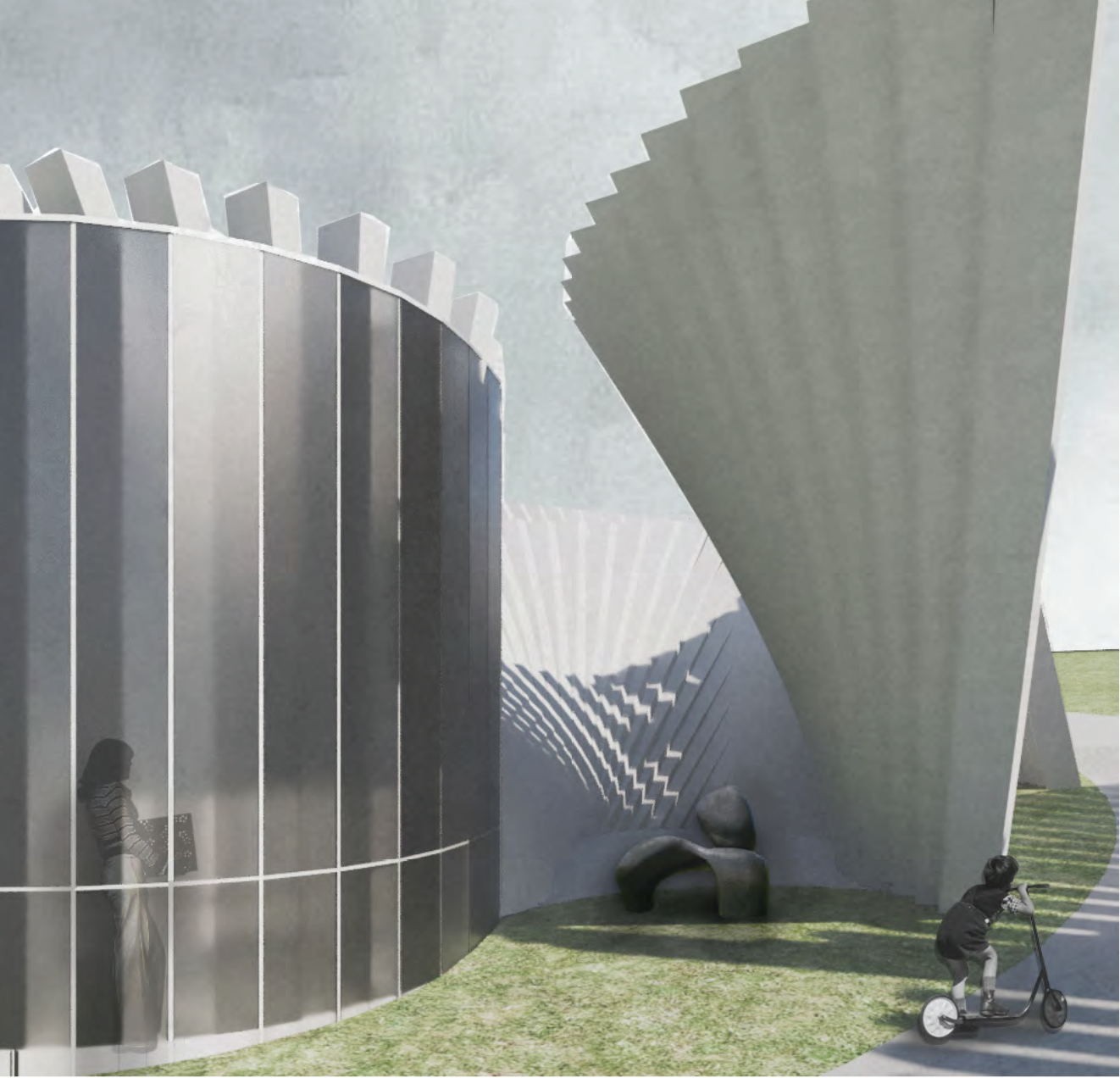The design for the Reed Pavilion was initiated by drawings
and investigations of the site at Tillinghast Beach and other systems in found in nature. I was fascinated with two coral
types lettuce and brain coral. I was struck by their structure
and the patterns and aggregated forms that create protective exoskeletons that still allow this living organism to remain connected to the environment around them and an integral part
of its ecosystem. I found the curved forms of the lettuce coral
to be compelling for its interior qualities and its graceful ability to respond to its topography. The aspect of the brain coral that I found interesting was the way it developed a protective structure without having to have solid walls. This concept of permeable protection emerged as a guiding principal
in my design scheme.
and investigations of the site at Tillinghast Beach and other systems in found in nature. I was fascinated with two coral
types lettuce and brain coral. I was struck by their structure
and the patterns and aggregated forms that create protective exoskeletons that still allow this living organism to remain connected to the environment around them and an integral part
of its ecosystem. I found the curved forms of the lettuce coral
to be compelling for its interior qualities and its graceful ability to respond to its topography. The aspect of the brain coral that I found interesting was the way it developed a protective structure without having to have solid walls. This concept of permeable protection emerged as a guiding principal
in my design scheme.
REED PAVILLION
Restoring Eroded Histories
Environmental Architecture
Barrington, RI
Restoring Eroded Histories
Environmental Architecture
Barrington, RI

The layout and organization of the program
was systematically based on the organizational
structure of the coral as well. The grooved
surface of the coral is comprised of calcium
carbonate skeletons that curve around the
polyps, which is the living tissue of the coral.
This natural system of protection within the exoskeleton became the foundational basis for
the identification of program placement and organization. All exterior programs including
outdoor exhibition spaces are placed within the
curves of the structure, allowing these spaces
to remain open to the landscape while also
being protected by the surrounding structure.



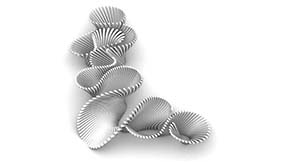
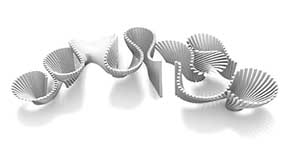
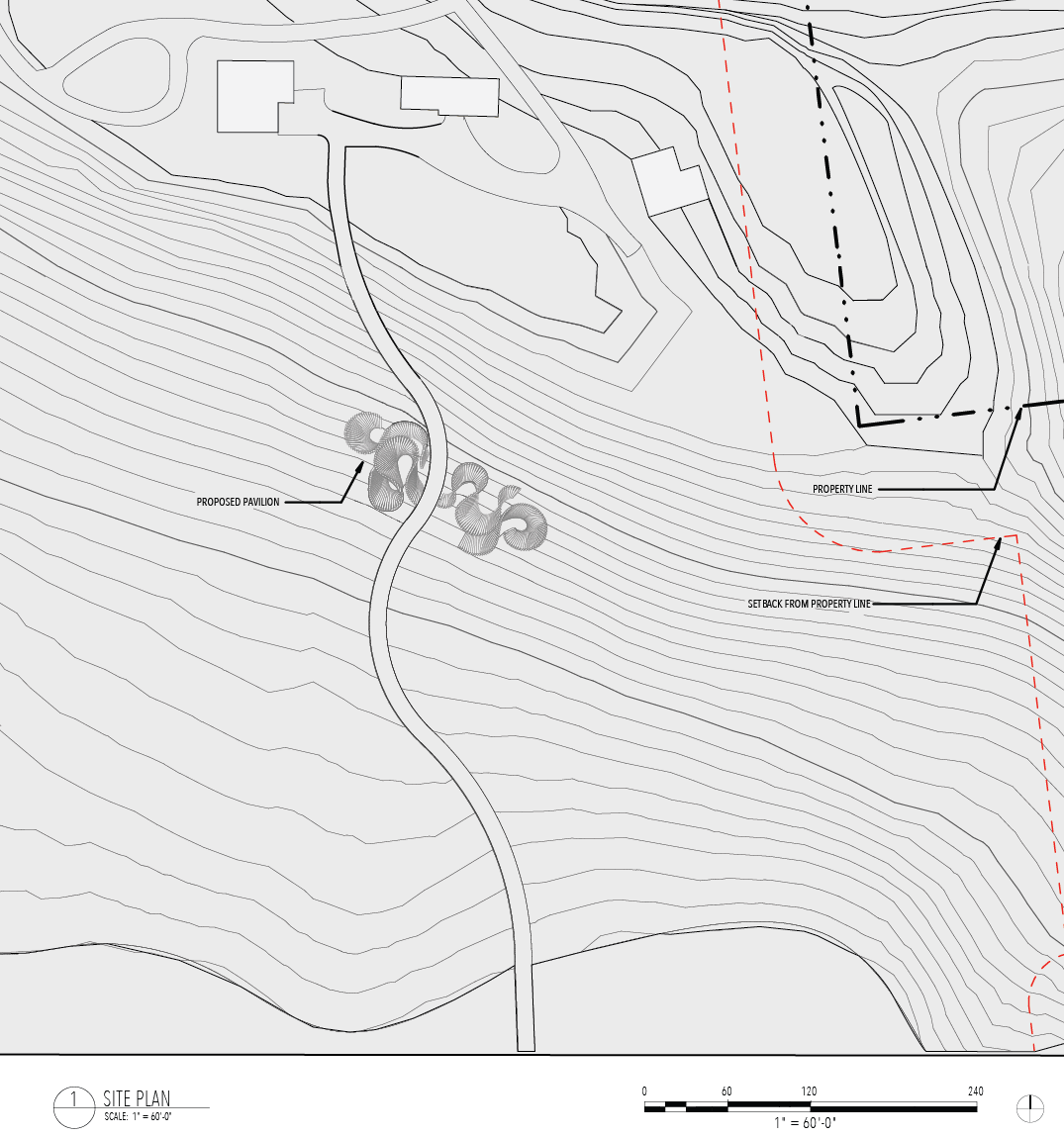
To address ecological issues at the site my scheme proposes the harvesting of the invasive phragmites to be used as a building material, therefore allowing the necessary expansion of the salt marsh and increased species diversity.
Through merging the forms of lettuce coral and brain coral, I was able to strategically manipulate the form to develop areas where the structure curves over creating spaces that were optimal for enclosure. These areas are where all indoor programing was placed. These programs included classrooms, bathrooms, storage, and a lab. These spaces are intentionally not visible from the site plan.
Through merging the forms of lettuce coral and brain coral, I was able to strategically manipulate the form to develop areas where the structure curves over creating spaces that were optimal for enclosure. These areas are where all indoor programing was placed. These programs included classrooms, bathrooms, storage, and a lab. These spaces are intentionally not visible from the site plan.


